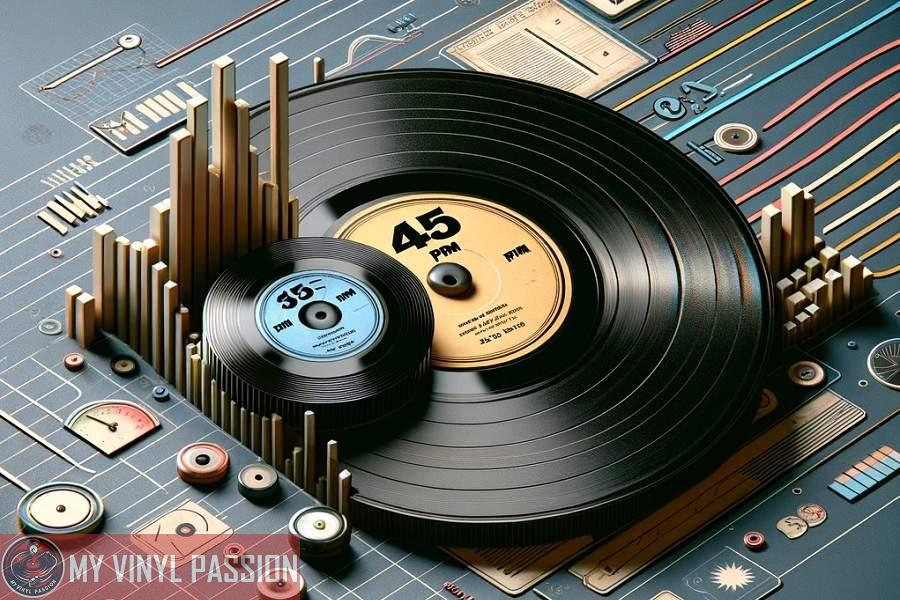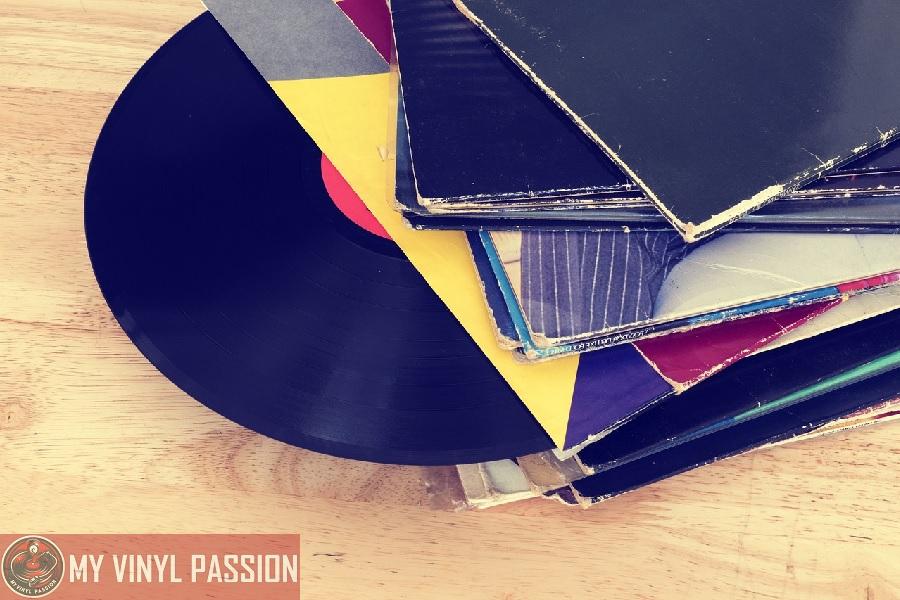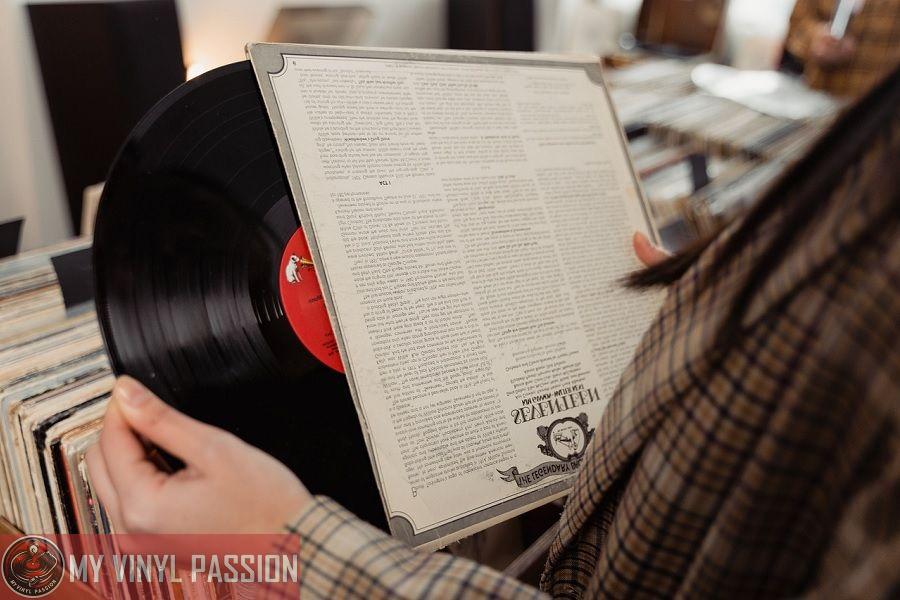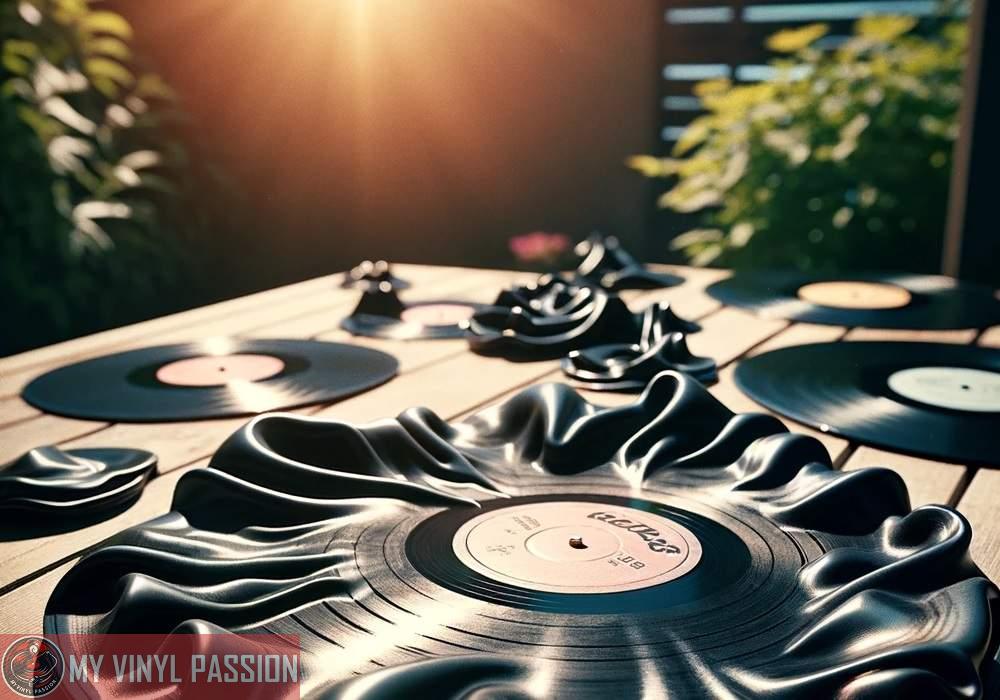When exploring the world of vinyl records, one may come across the terms 33 and 45 RPM, referring to the speed at which a record is played.
These numbers stand for “revolutions per minute,” determining the quality and duration of the audio on each record. In general, 12-inch records are designed to be played at 33 RPM, while 7-inch singles usually spin at 45 RPM.
In Summary
33 and 45 RPM refer to the playing speeds of vinyl records, affecting audio quality and playback duration.
12-inch records typically spin at 33 RPM, while 7-inch singles play at 45 RPM.
Both formats hold historical significance and continue to be relevant in contemporary vinyl record culture.
The differences between the two speeds are rooted in their historical development, technical aspects, and practical considerations. Initially, 33 RPM was created for larger albums known as long-playing (LP) records, providing a longer playback time.
In comparison, 45 RPM was designed for shorter singles, prioritizing higher audio quality. Both formats have left a significant cultural impact and are still relevant in the world of modern vinyl record collectors and enthusiasts.
Understanding Vinyl Records
Vinyl Record Formats
Vinyl records have been a popular medium for listening to music for decades. You will come across various formats such as LPs (Long Play), EPs (Extended Play), and singles. LPs typically contain multiple tracks per side, whereas singles only feature one or two tracks. EPs fall in between, generally offering three to five tracks per side.
Record Sizes and Speeds
When it comes to record sizes and speeds, there are three main types: 33 RPM, 45 RPM, and 78 RPM. Let’s dive into their differences:
RPM | Size (inches) | Type |
|---|---|---|
| 33 | 12 | LP |
| 45 | 7 | Single |
| 78 | 10 | Shellac |
33 RPM (12-inch): These records are well-known as LPs. They offer a longer playtime and generally lower noise levels. As they are played at a slower speed, the grooves on the vinyl can be closer together, providing better sound quality.
45 RPM (7-inch): These are commonly called singles. They have fewer tracks compared to an LP and are often used as promotional material for new songs. Faster rotation speed results in shorter playtime and slightly reduced sound quality.
78 RPM (10-inch): These are the oldest format of vinyl, made from shellac rather than vinyl. The records are thick and brittle, and you’ll mostly find classical and jazz music on them. They have a very short playtime and lower sound quality than 33 and 45 RPM.
To enjoy your records, make sure to adjust your record player to the appropriate speed setting depending on the record’s RPM. Keep in mind that understanding the difference between various record formats and speeds will enhance your listening experience and appreciation for vinyl music.
Historical Development
Evolution of Record Speeds
Before the introduction of vinyl records, the music industry was dominated by shellac discs played at 78 RPM. In the late 1940s, the era of vinyl began with the introduction of the 33 1/3 RPM format by Columbia Records. These long-playing (LP) records could hold up to 60 minutes of music, though most did not exceed 40 minutes.
As you continue on your historical journey, you’ll find out that the 45 RPM format emerged soon after the 33 1/3 RPM. The major industry players during the inception of vinyl records played a crucial role in determining the standard speeds we know today.
Here is a brief timeline on how each record speed evolved:
- Thomas Edison (1877): Invented the phonograph, successfully recording sound on cylinders, which were later replaced by discs.
- Emile Berliner (1888): Introduced the Gramophone player that allowed mass production of flat shellac records played at approximately 78 RPM.
- Columbia Records (1948): Launched 33 1/3 RPM Long-Playing (LP) records, which revolutionized the industry by offering extended playback time.
- RCA (1949): Created the 45 RPM format, which became popular for single releases and often found in jukeboxes.
Major Industry Players
As mentioned earlier, major industry players like RCA and Columbia Records contributed to the evolution of record speeds. Emile Berliner and Thomas Edison paved the way with their respective inventions in the late 19th and early 20th centuries. Their innovations laid the groundwork for further developments in the music industry.
Columbia Records held the patent for the 33 1/3 RPM format and quickly gained market share because of the longer runtime and improved audio fidelity in comparison to the older shellac records. This became the preferred choice for listening to full-length albums.
On the other hand, the creation of the 45 RPM format by RCA was done in response to Columbia’s success. The format primarily targeted single releases and easily became popular in jukeboxes due to its compact size and lower cost.
In conclusion, the historical development of 33 and 45 RPM record formats can be traced back to the innovations of music pioneers like Thomas Edison and Emile Berliner. The progress in record formats was directly influenced by the competitive rivalry between major industry players such as Columbia Records and RCA.
Technical Aspects
Sound Quality Factors
When comparing 33 and 45 RPM records, there are several factors that can affect sound quality. The grooves on a vinyl record are where the sound information is stored, and the spacing of these grooves plays a role in sound quality.
A 45 RPM record has wider grooves, allowing for a more detailed and richer sound. However, these larger grooves take up more space, resulting in shorter playtimes compared to a 33 RPM record.
The stylus, or needle, reads the information within the grooves, and the speed at which it moves affects the reproduction of the sound. A stylus moving at 45 RPM has a faster linear velocity than at 33 RPM, which can lead to increased audio clarity.
Record Players and Turntables
Your choice of turntable and accompanying equipment can also influence the overall listening experience. The motor, tonearm, and cartridge are all essential components that impact the performance of a turntable.
When selecting a turntable or record player, ensure it is compatible with both 33 and 45 RPM records. Most modern turntables have a switchable option for adjusting the speed. Here is a basic rundown of components to consider when evaluating a turntable’s sound quality:
- Motor: A quality motor ensures accurate rotation speeds and minimal vibration, which can negatively affect sound reproduction.
- Tonearm: A well-designed tonearm will maintain accurate tracking and prevent unnecessary wear on your records.
- Cartridge: A suitable cartridge not only has an impact on the sound but also ensures proper tracking of the stylus along the grooves.
In conclusion, both 33 and 45 RPM records offer unique listening experiences and have their advantages and drawbacks in terms of sound quality. Ultimately, your personal equipment and preferences will determine the best format for your vinyl collection.
Practical Considerations
Playing Time and Convenience
When comparing 33 and 45 RPM vinyl records, one aspect to consider is the playing time. Generally speaking, 33 RPM records can hold more music per side compared to their 45 RPM counterparts, due to their larger size and slower playback speed.
This can be a deciding factor if you prefer to enjoy longer listening sessions without frequent interruptions. Additionally, bear in mind that the volume on 45 RPM records might be slightly higher because of the wider grooves that allow for better sound reproduction.
Both formats offer the unique charm of vinyl which is appreciated by enthusiasts worldwide.
When it comes to convenience, you should also consider your current playback equipment, as some record players may only support 33 RPM, while others can handle both speeds. Make sure to verify the compatibility of your turntable before making a purchase.
Durability and Maintenance
When it comes to the durability of vinyl records, there are a few factors to keep in mind. One common issue for both 33 and 45 RPM records is the accumulation of dust on their surface.
To ensure quality playback of your records, it’s essential to include regular cleaning as part of your maintenance routine. You can use a specially designed cleaning solution and brush to gently remove dust and preserve the quality of your collection.
In terms of wear and tear, both 33 and 45 RPM vinyl records can be subject to similar forms of damage. Due to their lighter weight, 45 RPM records may be more susceptible to warping if not properly stored or handled.
To protect your vinyl from potential harm, make sure to store them vertically and away from direct sunlight or heat sources.
In summary, it’s important to consider both playing time and convenience as well as durability and maintenance when deciding between 33 and 45 RPM vinyl records.
Taking good care of your collection and ensuring proper equipment compatibility will help prolong the life of your vinyl and provide you with enjoyable listening experience for years to come.
Cultural Impact
Music Industry and DJs
The advent of 45 RPM records and 33 RPM albums had a significant impact on the music industry and affected the way DJs performed. The 45 RPM records allowed for a single song on each side, while the larger 33 RPM albums could contain multiple songs.
This affected how music was marketed and consumed. The shorter, more focused format of the 45 RPM record yielded many popular hits and encouraged listeners to purchase songs individually.
In the era of radio, the use of 45 RPM records by DJs was essential.
The smaller size and focused format allowed DJs to easily and quickly switch between songs during their sets, contributing to the rise of radio as a popular medium for music. DJs could select songs based on their listeners’ preferences, which in turn further influenced the music industry’s focus on producing hit singles.
The Rise of the Jukebox
Another significant effect of the 45 RPM vinyl record was its crucial role in the popularization of the jukebox. As jukeboxes became a staple in bars, restaurants, and other public places, 45 RPM records provided the perfect format for these machines.
Their compact size allowed for more records to be stored in a single jukebox, and their shorter playtime made it easier for patrons to choose and listen to their favorite songs.
In addition, the 45 RPM record’s impact on popular music and culture extended beyond the music industry and radio, as it also played a role in shaping American culture. The jukebox became a symbol of social interaction and shared musical experiences, bringing people together and creating lasting memories.
To summarize, the introduction of the 45 RPM record and its larger counterpart, the 33 RPM album, significantly transformed the music industry, the role of DJs, and the popularity of jukeboxes, ultimately shaping American culture and radio as we know it today.
Modern Usage
Vinyl Collecting
As a vinyl enthusiast, you may find that 33 and 45 RPM records both have a place in your collection.
The resurgence of vinyl records is, in part, due to audiophiles who prefer their unique sound quality. 33 RPM records, commonly found in a 12-inch size, often contain entire albums and are sought after for their longer playing time. In contrast, 45 RPM records are typically 7 inches in diameter and comprise singles or EPs, showcasing just a few tracks per side.
Collectors seeking rare or vintage items can find 7-inch records at 33 RPM, which are much less common compared to those at 45 RPM. On the other hand, 45 RPM records tend to have a higher audio quality due to increased frequency resolution. As such, some collectors may value them for sound quality and nostalgic charm.
- Record Sizes and Speeds
- 33 RPM: 12-inch (common), 7-inch (rare)
- 45 RPM: 7-inch
Professional and Home Use
When you want to enjoy the analog experience of playing music, you may choose a vintage record player or a modern turntable depending on your preference. Most modern turntables can play both 33 and 45 RPM records, offering you flexibility in your collection.
For professional use, DJs may utilize both 33 and 45 RPM records to serve a variety of musical tastes. The larger 12-inch, 33 RPM records can offer extended play sessions, while the 7-inch, 45 RPM records are perfect for single-track selections or showcasing a particular artist.
Comparing 33 and 45 RPM Records
Advantages and Disadvantages
When looking at 33 RPM vs 45 RPM records, one key distinction between the two is the sound quality. 45 RPM records generally have better sound quality due to their higher speed, allowing for more audio information per second.
In contrast, 33 RPM records may have slightly lower audio quality but will generally offer more playtime on a single record side.
Another significant difference between these record types is the size. 33 RPM records are typically around 12 inches in diameter, while 45 RPM records usually measure 7 inches. Consequently, you may prefer a smaller 45 RPM record if you have limited storage space or find the larger 33 RPM records unwieldy.
Choosing Between 33 and 45 RPM
To decide which record speed works best for you, consider the following factors:
- Personal preference: Some people may prefer the sound quality of a 45 RPM record, while others may value the extended playtime offered by 33 RPM records.
- Sound quality: As mentioned earlier, 45 RPM records generally offer better audio fidelity. If sound quality is important to you, you may gravitate toward 45 RPM records.
- Availability: 33 RPM records are more common and usually less expensive than their 45 RPM counterparts. If you’re primarily interested in expanding your vinyl collection without spending too much, 33 RPM records may be the more economical choice.
Ultimately, the best option for you will depend on your preferences and priorities. Experiment with both types of records to determine which one suits your listening habits and collection goals.
Frequently Asked Questions
What is the difference between 33 and 45 RPM records in terms of audio quality?
The difference between 33 RPM and 45 RPM records, in terms of audio quality, primarily comes down to the grooves on the vinyl. While 45 RPM records have tighter grooves, allowing for better high-frequency reproduction, 33 RPM records have more space per second of audio, which can result in less distortion and better low-frequency reproduction. However, modern vinyl pressings and proper playback equipment can make the difference in audio quality negligible between the two speeds.
Can you play a 33 RPM record on a 45 RPM setting without damaging the record?
Playing a 33 RPM record on a 45 RPM setting will not damage the record itself. However, the playback speed will be incorrect, resulting in the audio being pitched higher and played faster than intended. To play your records at the correct speed, ensure that your turntable is set to the appropriate RPM for the specific record.
What are the standard sizes for 33 and 45 RPM vinyl records?
The standard sizes for vinyl records are typically based on their RPM. 33 RPM records are generally 12 inches in diameter, while 45 RPM records are usually 7 inches. These size differences enable more music to be stored on the larger 33 RPM records, allowing for full album releases, whereas the smaller 45 RPM Records are typically used for singles or EPs.
Why were 45 RPM records historically used, and what is their use today?
45 RPM records were introduced in the late 1940s as a more convenient, compact format for singles and shorter works. They were indeed popular for playing short songs or single releases and were great for jukeboxes. Today, while the use of vinyl records in general has seen a resurgence, 45 RPM records are still produced, mainly for collectors, DJs, and limited releases of singles by independent artists.
Are new vinyl releases typically pressed at 33 or 45 RPM?
New vinyl releases are typically pressed at 33 RPM, especially for full-length albums. This is due to the larger size and capacity of the 33 RPM format, allowing for more music to be stored on a single record. However, some singles or limited releases may still be pressed at 45 RPM for various reasons, such as maintaining historical continuity or targeting specific collector markets.
Who is the target market for purchasing vintage 33 and 45 RPM records?
The target market for purchasing vintage 33 and 45 RPM records includes collectors, audiophiles, music enthusiasts, and those who appreciate the nostalgic experience of listening to music on vinyl. These individuals often value the unique sound and experience offered by vinyl records, as well as the larger album artwork and tactile qualities. In many cases, these collectors may be drawn to specific genres, artists, labels, or time periods.





